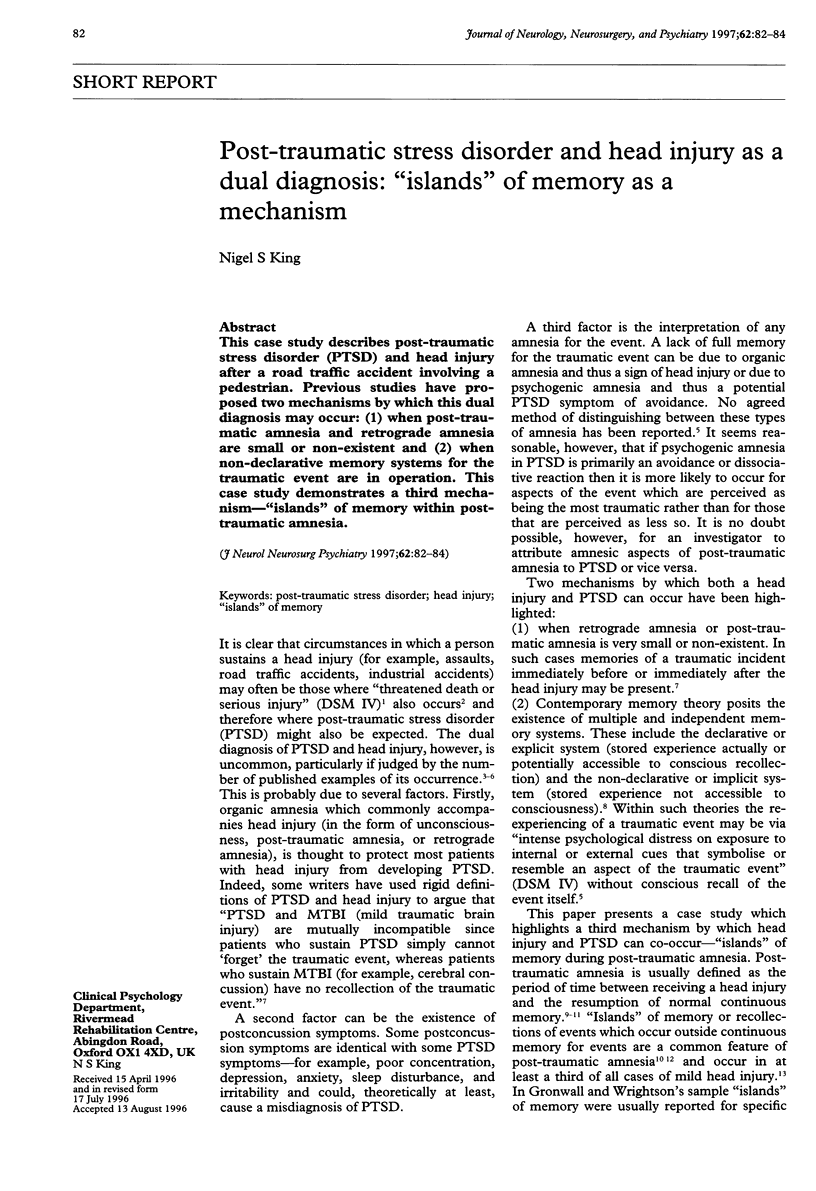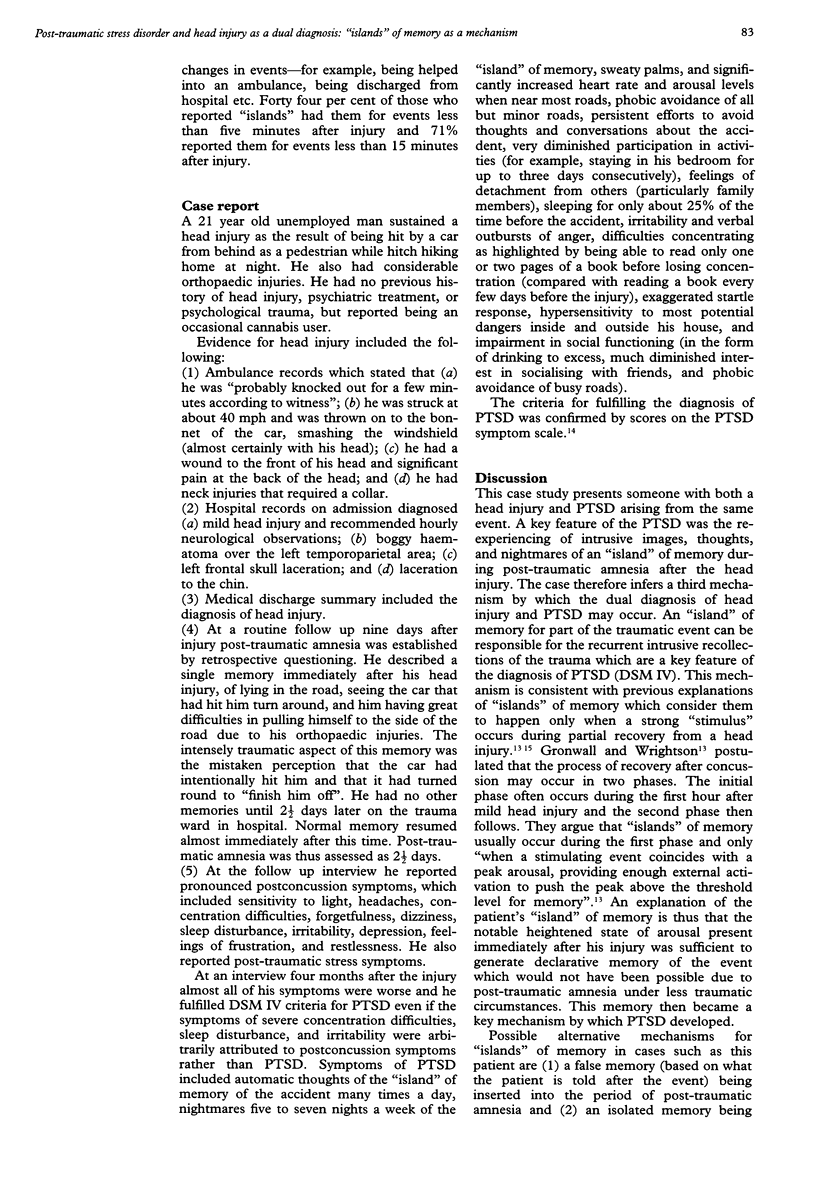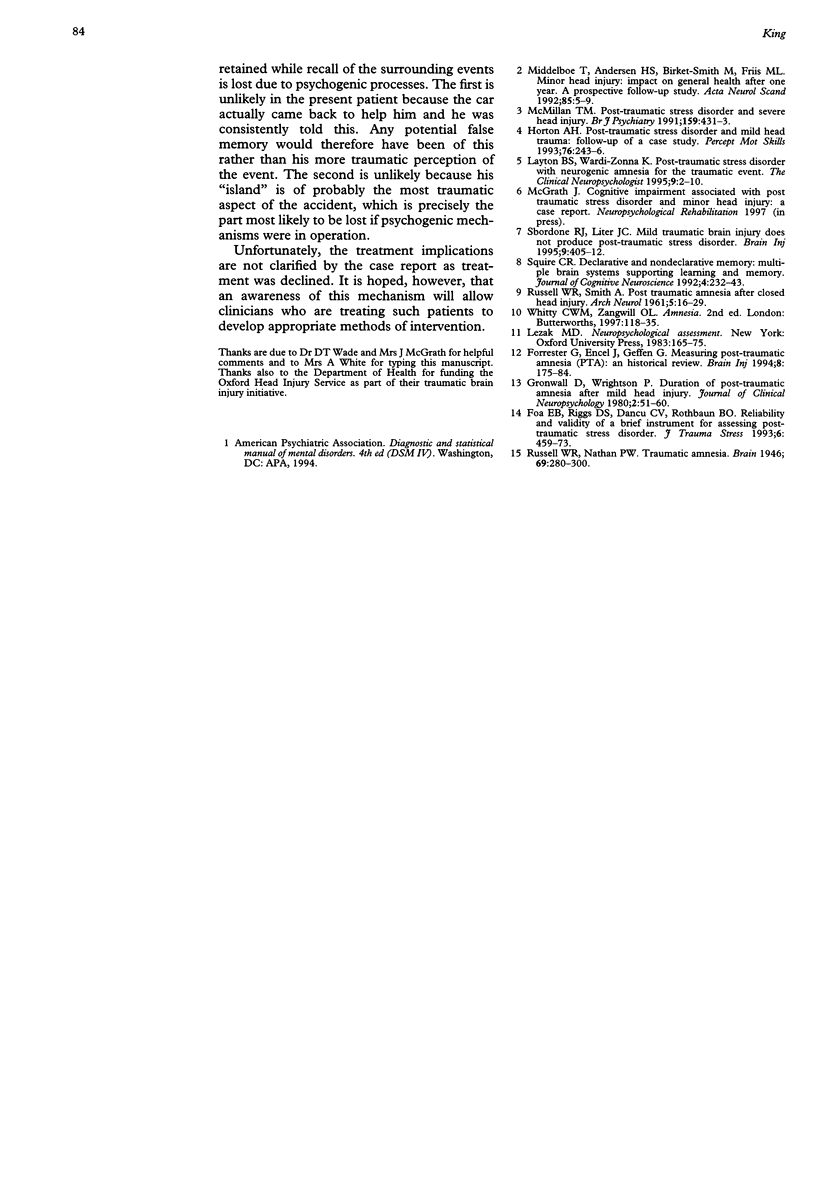Abstract
This case study describes post-traumatic stress disorder (PTSD) and head injury after a road traffic accident involving a pedestrian. Previous studies have proposed two mechanisms by which this dual diagnosis may occur: (1) when post-traumatic amnesia and retrograde amnesia are small or non-existent and (2) when non-declarative memory systems for the traumatic event are in operation. This case study demonstrates a third mechanism--"islands" of memory within post-traumatic amnesia.
Full text
PDF


Selected References
These references are in PubMed. This may not be the complete list of references from this article.
- Forrester G., Encel J., Geffen G. Measuring post-traumatic amnesia (PTA): an historical review. Brain Inj. 1994 Feb-Mar;8(2):175–184. doi: 10.3109/02699059409150969. [DOI] [PubMed] [Google Scholar]
- Horton A. M., Jr Posttraumatic stress disorder and mild head trauma: follow-up of a case study. Percept Mot Skills. 1993 Feb;76(1):243–246. doi: 10.2466/pms.1993.76.1.243. [DOI] [PubMed] [Google Scholar]
- McMillan T. M. Post-traumatic stress disorder and severe head injury. Br J Psychiatry. 1991 Sep;159:431–433. doi: 10.1192/bjp.159.3.431. [DOI] [PubMed] [Google Scholar]
- Middleboe T., Andersen H. S., Birket-Smith M., Friis M. L. Minor head injury: impact on general health after 1 year. A prospective follow-up study. Acta Neurol Scand. 1992 Jan;85(1):5–9. [PubMed] [Google Scholar]
- Sbordone R. J., Liter J. C. Mild traumatic brain injury does not produce post-traumatic stress disorder. Brain Inj. 1995 May-Jun;9(4):405–412. doi: 10.3109/02699059509005780. [DOI] [PubMed] [Google Scholar]


